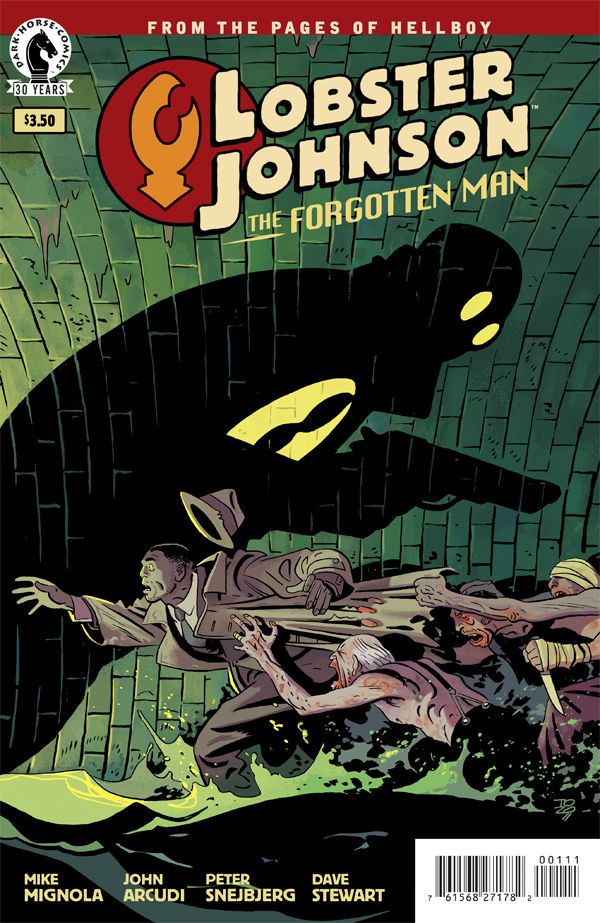In the Mignolaverse, the pulp hero doesn't need to personally set the story in motion -- and that's one of its most refreshing aspects. We've all seen typical noir stories start with femme fatales arriving at the offices of hard-boiled private eyes, unsuspecting victims in the right place at the wrong time and gritty mobsters building criminal empires, but -- in "Lobster Johnson: The Forgotten Man" -- Mike Mignola, John Arcudi and Peter Snejbjerg allow a "forgotten man" to start the story and set the speedy pace for this missing persons case with a supernatural twist.
Vintage pulp fiction tales often mirrored (and exaggerated) the social/political climate of the times in which they were written; modern noir stories are just as adept at using that tradition as a vehicle to examine contemporary parallels throughout the narrative, and that shows here. From the first pages of "The Forgotten Man," Mignola and Arcudi immerse us in an era where (on the surface) working women are only allowed to be girl-reporters and people who live in Hoovervilles must be transient bums. However, one of the central lessons of stories that take place in the Mignolaverse is that there is always something worthy of attention lying just under the surface, and Mignola and Arcudi make that the case here.
Peter Snejbjerg's ("Starman," "Abe Sapien: The Abyssal Plain") art concentrates on the Depression-era period details that make Lobster Johnson's cast of characters believable, including slightly shabby clothes for the downtrodden men and appropriate hair for Tynan. With such a focus on the characters, the backgrounds are minimalist and serviceable. The introduction of the undead turns Snejbjerg's versatile art toward the EC Comics spectrum, and the book takes on an early-1950s horror vibe that is simultaneously fun, pulpish and gross.
In a terrific fight sequence conducted in the murky sewers, Lobster Johnson and his allies square off against Brother Frank and his undead minions. This is where Dave Stewart's brilliant colors provide a clear delineation between the scenes above and below ground. Snejbjerg's line work gets appropriately heavier underground, and Stewart's muted colors heighten the immediate menace of the minions and Frank's sheer madness. Together, Mignola, Arcudi, Snejbjerg and Stewart make "The Forgotten Man" a textbook example of how Mignolaverse tales work best when the art seamlessly transitions between the worlds above and below the surface. Lobster and company ultimately win the day, but as per the genre, Mignola and Arcudi remind us there is still more work to be done.
"The Forgotten Man" is an enjoyable adventure sure to please Lobster Johnson fans. The well-paced one-shot presents its mystery and ties up the loose ends without feeling rushed, but this is not the vehicle to learn about Lobster, as his role is limited to action rather than exposition. If you're not quite so familiar with Hellboy's favorite pulp hero, I recommend catching up with the four trade collections.

